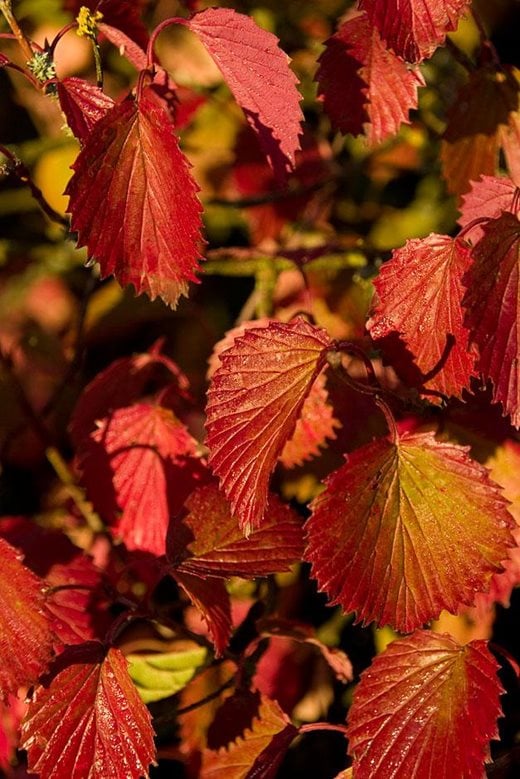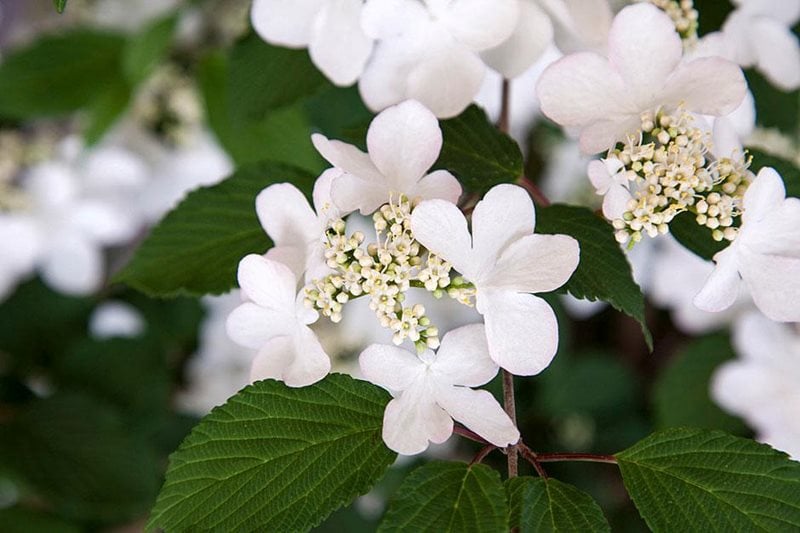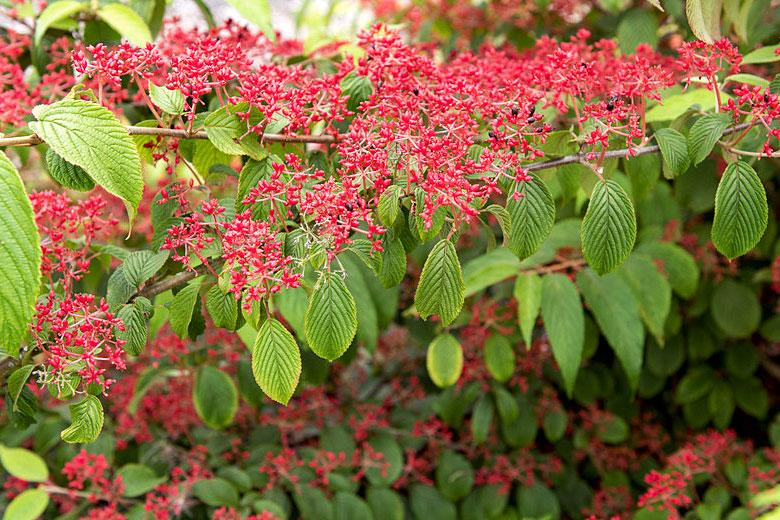In today’s smaller gardens, shrubs that perform at more than one season of the year are invaluable. The undisputed champions for colourful flowers, fruits and autumn foliage – are viburnums

A rose by another name
The guelder rose, Viburnum opulus, features pretty white lacecap flowers in June and July, followed in autumn by glistening red berries that usually last well into the winter and that are accompanied for a few weeks by purplish or reddish autumn leaf colour. The berries of the yellow-berried ‘Xanthocarpum’ often stand out especially well while ‘Compactum’ has the benefit of a neater habit. But be aware that ‘Roseum’ is sterile – so no berries.
From across the Atlantic come a number of excellent three-season species. The rarely seen V. acerifolium has fluffy white flowers, red berries that mature to black, and plummy crimson autumn colour, while selections are being made of V. dentatum with its white late spring flowers, and rich blue-black berries that ripen with the fiery autumn foliage. Look out for the compact Blue Muffin (‘Christom’), with intensely blue berries.
Then from Asia come two more species. Viburnum dilatatum is another whose generous bunches of crowded red berries last well into winter following the white flowerheads, although the flowers are let down a little by their unpleasant smell. But the autumn foliage in plummy to fiery shades is a great redeemer.
Seasonal delights of tiered viburnums

Finally, there are the many forms of V. plicatum f. tomentosum including ‘Cascade’, ‘Mariesii’, ‘Pink Beauty’ and ‘Summer Snowflake’ but especially the Chelsea Plant of The Year for 2015, Kilimanjaro Sunrise (‘Jww5’). All have unique tiered growth with the branches held horizontally, one above the other, white lacecap flowerheads that face upward in double ranks in May, red berries that mature to black in August, and autumn foliage turning fiery red. Kilimanjaro Sunrise even brings us a second flush of flowers in September or October. Impressive? You bet.


